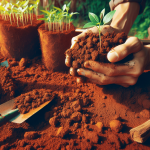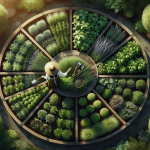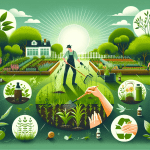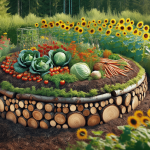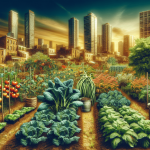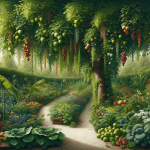This post may contain affiliate links. As an Amazon Associate, we may earn commissions from qualifying purchases.
Creating a successful square foot garden is within your reach with a bit of planning and enthusiasm. This guide will walk you through the essentials, from selecting the right location and preparing your soil, to choosing plants that thrive in compact spaces. You’ll learn about the benefits of square foot gardening, such as maximizing your yield in a minimal area and simplifying maintenance. Dive in, and soon you’ll be harvesting a variety of fresh vegetables and herbs from your efficient and flourishing garden. Have you ever wondered how you can create a successful square foot garden right in your backyard? With limited space and a myriad of plant options, it might seem like a challenging task. But don’t worry! Square foot gardening is a fantastic and efficient way to grow your own tasty vegetables and beautiful flowers. It maximizes the available space and is perfect for beginners and experienced gardeners alike. Let’s delve into the details and guide you step-by-step on how you can embark on this rewarding gardening journey.
What is Square Foot Gardening?
You might be wondering, what is square foot gardening exactly? Square foot gardening is an intensive planting method that involves dividing the gardening space into small, manageable sections—usually one foot by one foot—that you can plant with different crops. It’s designed to maximize yields and ease maintenance, making it a delightful approach for urban or small-space gardeners.
Benefits of Square Foot Gardening
Square foot gardening comes with several perks:
- Maximized Space: You can grow more in less space by optimizing plant placement.
- Easy Maintenance: Handling weeds and pests becomes simpler.
- Efficient Watering: Focused watering helps save water.
- Variety of Crops: Grow different plants in close proximity.
- Less Waste: Harvest what you need without surplus.
Getting Started: Planning Your Garden
Before you pick up a shovel, it’s crucial to plan your square foot garden. This is the groundwork that will set you up for success.
Choosing the Right Location
Select a spot in your yard that gets plenty of sunlight—at least 6 to 8 hours a day. Ensure the area is level and has good drainage. Proximity to your house is a plus for convenience in watering and harvesting.
Determining the Size
For beginners, a 4×4 foot box divided into 16 one-foot sections is ideal. It’s manageable yet provides sufficient space to grow a variety of plants. Feel free to adjust the size based on your available space and needs.
Gathering Supplies
You’ll need the following to get started:
- Wood Planks: For building the garden box.
- Soil Mix: A blend of compost, peat moss, and vermiculite.
- Grid Material: String or wooden slats to create the one-foot sections.
- Seeds/Seedlings: Choose based on your climate and preference.
- Garden Tools: Basic tools like a trowel, watering can, and gloves.
Building the Garden Box
Construct your garden box using untreated wood planks to avoid harmful chemicals leaching into your soil. Nail or screw the planks together to form a sturdy frame. Next, place the box on your chosen location and fill it with the soil mix.
Creating the Grid
Creating a grid is essential for organizing your garden into square-foot sections. Use string or thin wooden slats to divide the box into 16 equal squares. This grid will guide your planting and ensure adequate spacing.
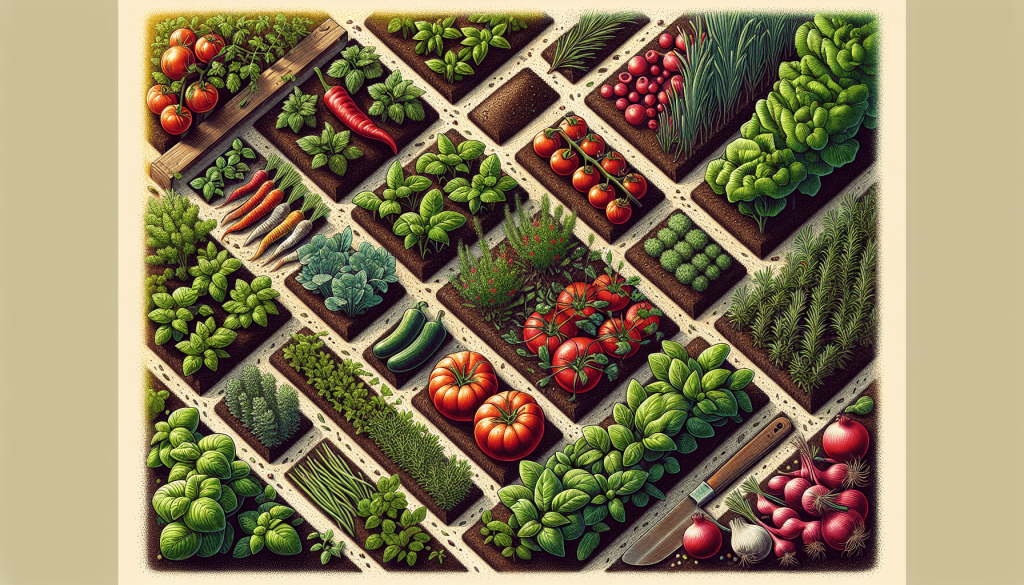
Soil Preparation: The Foundation of Your Garden
Soil is the lifeblood of your garden. Good soil can make the difference between a thriving garden and one that struggles.
Ideal Soil Mix
Mel Bartholomew, the founder of square foot gardening, recommends a soil mix comprising one-third compost, one-third peat moss, and one-third coarse vermiculite. This mix retains moisture, provides nutrients, and ensures good aeration for plant roots.
Preparing the Soil
Fill your garden box with the prepared soil mix. Once filled, use a rake to level it off and smooth the surface. This sets the stage for your plants to take root and flourish.
Planting Your Square Foot Garden
Now comes the most exciting part—planting! Your garden is ready to host an array of vegetables, herbs, and flowers.
Choosing Plants
Consider the following when selecting plants:
- Climate Suitability: Choose plants that thrive in your region’s climate.
- Companion Planting: Some plants grow better together. For example, tomatoes and basil are great companions.
- Crop Rotation: Avoid planting the same crops in the same spot year after year to prevent soil depletion and pest buildup.
Planting Guide
Here’s a general guide on how many plants you can grow per square foot:
| Plant Type | Number per Square Foot |
|---|---|
| Carrots | 16 |
| Lettuce | 4 |
| Bush Beans | 9 |
| Tomatoes | 1 (with trellis) |
| Radishes | 16 |
| Bell Peppers | 1 |
| Spinach | 9 |
| Onions | 9 |
Sowing Seeds and Transplanting Seedlings
Follow these steps:
- Mark the Spots: Use your finger or a stick to mark spots for each plant within each square.
- Sow Seeds: Plant the seeds according to the specific depth and spacing instructions on the seed packet.
- Transplant Seedlings: If you’re using seedlings, dig a small hole and gently place the seedling in it, then cover with soil and water lightly.
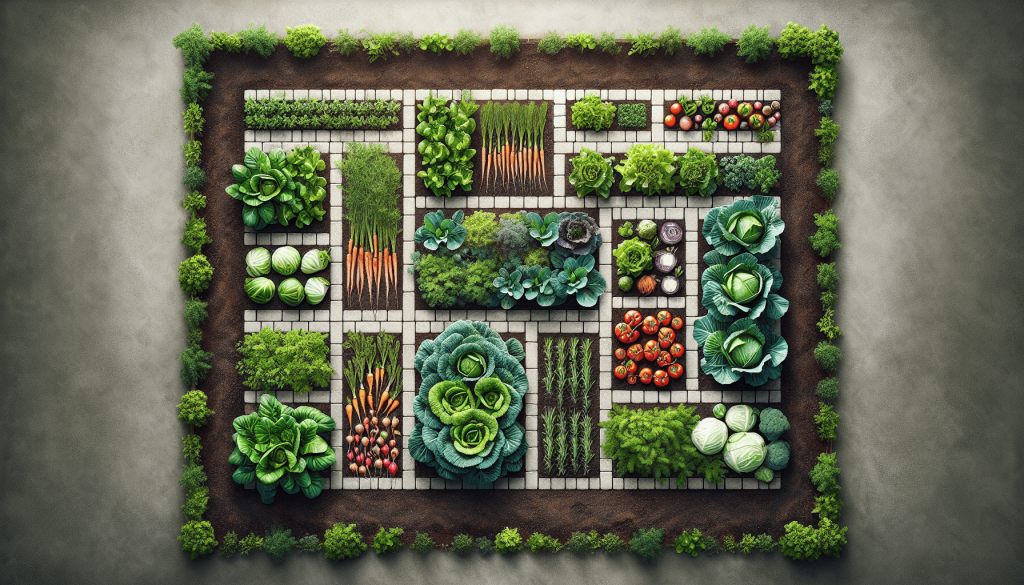
Caring for Your Garden
Consistent care is key to a successful garden. This includes watering, fertilizing, and keeping pests at bay.
Watering
Keep the soil consistently moist. Water your garden early in the morning or late in the afternoon to minimize evaporation. A watering can with a fine rose or a drip irrigation system works best to avoid soil displacement and plant damage.
Fertilizing
Feed your plants with organic fertilizer every 3 to 4 weeks. Compost tea or worm castings are excellent choices for organic gardens. Ensure to follow the recommended dosage to avoid over-fertilizing.
Pest Control
Identify common pests in your area and watch for signs of infestation. Organic solutions like neem oil, insecticidal soap, or homemade garlic spray can effectively deal with pests. Handpicking larger pests like caterpillars can also be effective.
Mulching
Mulching helps retain moisture, suppress weeds, and regulate soil temperature. Use organic mulch like straw, grass clippings, or shredded leaves around your plants.
Harvesting and Enjoying Your Bounty
Nothing beats the joy of harvesting fresh produce from your garden. Knowing when and how to harvest your crops is crucial for the best flavor and extended productivity.
Harvesting Guidelines
- Leafy Greens: Harvest outer leaves first to encourage more growth.
- Root Vegetables: Pull up radishes and carrots when they reach desired size.
- Fruiting Vegetables: Pick tomatoes and peppers when they’re fully colored and slightly soft.
Storing Your Harvest
Proper storage extends the life of your harvest:
- Leafy Greens: Store in the fridge in a plastic bag with a damp paper towel.
- Root Vegetables: Keep in a cool, dark place or in the fridge.
- Herbs: Dry or freeze for later use.
Troubleshooting Common Issues
Even experienced gardeners face challenges. Here are some common issues and their solutions:
Common Pests
| Pest | Identifying Signs | Solution |
|---|---|---|
| Aphids | Small, green/black insects on undersides of leaves | Spray with soapy water or neem oil |
| Slugs | Irregular holes in leaves, slime trails | Handpick at night, use beer traps |
| Tomato Hornworms | Large green caterpillars with horn-like protrusions | Handpick, introduce beneficial predators like ladybugs |
Plant Diseases
- Powdery Mildew: White powdery spots on leaves. Treat with a mixture of baking soda and water.
- Blight: Brown/black spots on leaves and stems. Remove affected plants and ensure good air circulation.
Nutrient Deficiencies
- Yellowing Leaves: Indicates nitrogen deficiency. Apply a balanced organic fertilizer.
- Stunted Growth: May be due to phosphorus deficiency. Bone meal can help.
Expanding Your Garden
Once you get the hang of square foot gardening, you might want to expand. Here are some ways to take your square foot garden to the next level:
Adding Vertical Elements
Vertical gardening can save space and increase yields. Use trellises for vining plants like cucumbers and peas. Install stakes or cages for plants like tomatoes.
Incorporating Perennials
Perennials like asparagus, strawberries, and herbs return year after year. They make a great addition to any square foot garden, providing long-term yields with minimal upkeep.
Succession Planting
Maximize your garden’s productivity by practicing succession planting. After harvesting one crop, immediately plant another crop in its place. This keeps your garden producing throughout the growing season.
Closing Thoughts
Creating a successful square foot garden is not only feasible but also an immensely rewarding experience. With careful planning, diligent care, and a touch of patience, you’ll be able to grow a bountiful garden full of fresh produce and beautiful flowers. Remember, gardening is a continual learning process, so don’t be disheartened by initial setbacks. Embrace the journey, experiment with new plants, and most importantly, enjoy the fruits of your labor.
Happy gardening!

